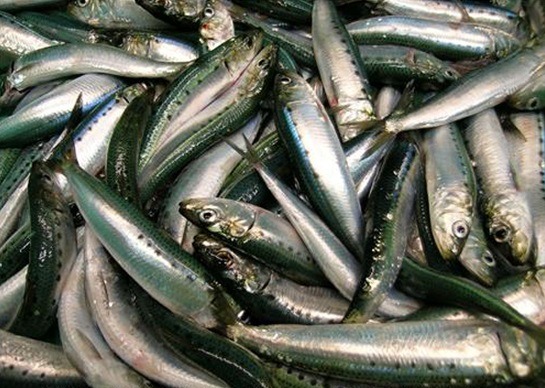In mid-April, a 20-million-dollar industry hit the brakes when the Pacific Fishery Management Council voted to close the West Coast sardine fishery, effective immediately.
It’s unusual for a fishery to be shuttered so abruptly (the current season would normally have run another two months until the end of June), but certainly not unwarranted. In the last eight years, the sardine population has plunged by 91%. With the population on the verge of (or perhaps already past the point of) collapse, the industry’s only hope for recovery is to pull their nets and hope the sardines bounce back.
The fate of the marine ecosystem – not just an industrial fleet of fishing vessels – hangs in the balance. Dwindling sardine numbers have been blamed for pelican nesting failures and a surge in sea lion pup strandings (both species rely on sardines as a food source). They’re not alone; sardines are a popular menu item for many coastal species. By choosing to seat ourselves at this dining table, we humans are now in competition with the rest of the oceanic food web.
Whether or not the sardines will recover remains to be seen. Collapsed fisheries – fish stocks whose numbers have fallen so low that they’re now economically unviable – can be found all over the world, particularly in places where humans have been using industrialized fishing techniques (big, motorized boats trailing miles of nets or towing seafloor-scouring trawls) the longest.
Some, like the once-famed cod fishery of Georges Bank off the coast of New England, have failed to recover despite decades of fishing closures and restrictions. This collapse could be permanent; the ecosystem may have shifted into a new regime, one that no longer has a place for a thriving cod population.
Other fisheries – sturgeon and eel on the Hudson River; the blue walleye of the Great Lakes –have been gone so long that today they’re all but forgotten.
Given how damaging these collapses are, why are they still happening?
Fisheries crash because we’re bad at predicting their population dynamics — and even worse at regulating our fishing fleet to compensate. In part, our predictions are limited by uncertainty; not only is it tricky to count a mobile fish population that’s hidden below the waves, but it’s also incredibly hard to predict what next year’s oceanic conditions will be, much less how the fish will respond to them. But even when science does make good predictions (biologists have been warning us about an upcoming sardine collapse for years), management often fails to respond. Even oversight agencies can drop the ball. Seafood Watch, the Monterey Bay Aquarium’s widely adopted consumer sustainable fish guide, labels the Pacific coast sardine fishery as a “best choice,” though they do note the fishery’s potential volatility.
Our regulatory hesitance stems largely from the economic consequences associated with dialing back on fishing. A fishery may look healthy for many years, supporting unsustainably high levels of catch, before it collapses. It’s understandably hard to convince fishermen, whose livelihoods are at stake, to cut back before the signs are so obvious that it’s already too late. And it’s not as if we don’t need the protein; with more humans at higher economic status than ever before, fish are a key part of our global diet.
Really, though, this just means that the price of regulatory failure is higher than ever. It’s clear that our fishing practices have triggered one collapse after another. This should motivate us to act conservatively in the future, adopting risk-averse low catch limits and updating our management regularly as new data come in.
Meanwhile, as consumers we have to reconsider the fish we’re putting on our dinner plates. In some ways, Seafood Watch has it right. Sardines and other “forage fish” — the “herbivores” of the food web that, absent humans, become the prey of larger fish and marine mammals — are a good choice. They carry lower amounts of toxins like mercury and PCBs, which accumulate in larger, longer-lived fish. And, because they come from a lower trophic level than high-energy, predatory favorites like salmon and tuna, they’re a more efficient and, therefore, more sustainable choice on a planet where 7.2 billion other humans would like their mouthful of fish, too.
But as the case of the Pacific sardines demonstrates, sustainably managing a wild stock — especially one that feeds people, and the surrounding ecosystem — is no easy task. Of course many of our fish farms, which often rely on wild-caught “fish meal” themselves, aren’t sustainable either. Like many environmental conundrums, there are no easy answers – yet. Perhaps this latest fishery closure will inspire some.
Holly Moeller is currently a Postdoctoral Fellow at Woods Hole Oceanographic Institution. She also writes the “Seeing Green” environmental column for The Stanford Daily.
The above post originally appeared in The Stanford Daily and is copyrighted by Holly Moeller. Contact Holly Moeller at hollyvm ‘at’ alumni.stanford.edu.
MAHB-UTS Blogs are a joint venture between the University of Technology Sydney and the Millennium Alliance for Humanity and the Biosphere. Questions should be directed to joan@mahbonline.org
MAHB Blog: https://mahb.stanford.edu/blog/no-more-fish-in-sea/
The views and opinions expressed through the MAHB Website are those of the contributing authors and do not necessarily reflect an official position of the MAHB. The MAHB aims to share a range of perspectives and welcomes the discussions that they prompt.

